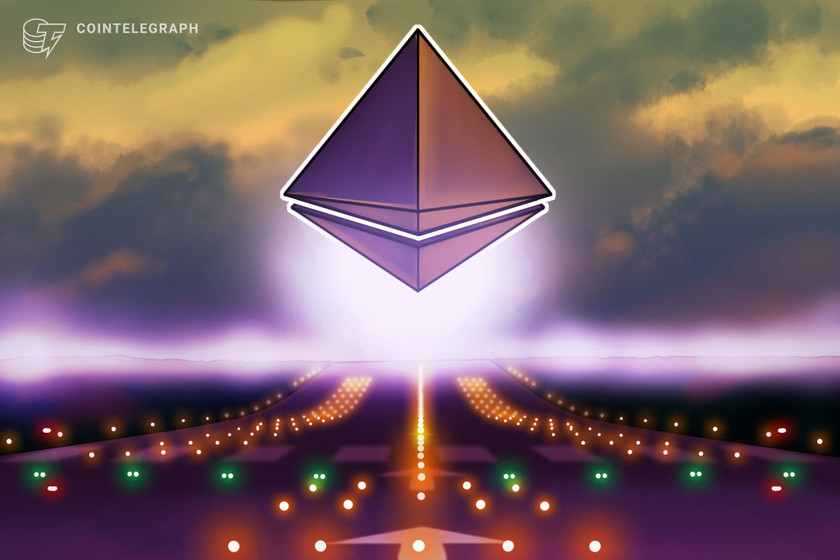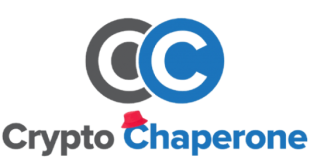Matic, xDAI (STAKE) and Loopring (LRC) rally as Ethereum gas fees rise

Soaring Etheruem gas costs are driving investors and protocols to take a closer look at layer-2 solutions like Matic, Loopring and xDai.
The start of a new month has brought renewed fervor from the cryptocurrency market as Bitcoin (BTC) price steadily climbed from a low of $43,537 on Feb. 28 to a high of $49,200 during today’s early trading hours.
As traders get excited about positive moves in the market and look to re-enter positions, the increasing use of DeFi continues to drive fees on the Ethereum (ETH) network higher, shining the spotlight on the top layer-2 (L2) protocols that offer working solutions.
Three protocols that have emerged as top L2 contenders with working platforms are Polygon (MATIC), xDai (STAKE), and Loopring (LRC). Each offers its own unique layer-2 approaches to helping ease high traffic on the Ethereum network.
MATIC/USDT
Polygon, previously known as Matic, officially launched as a layer-two aggregator for Ethereum on Feb. 9 as a way to offer an interoperability protocol for the network.
Since excitement for the rebrand began, MATIC price has increased by 400% from $0.05 to an all-time high of $0.245 on March 1. Growing excitement for the Aavegotchi (GHST) mainnet launch on March 2 has also brought a boost of attention and trading volume to MATIC.

Aavegotchi was one of the first projects to bridge over to the Polygon network and it will likely be joined by other projects if its mainnet launch on the network go smoothly.
MATIC also received a boost on Feb. 26 when it was announced that gaming giant Atari would be integrating Polygon in order to “bring their NFT & token products to Layer 2,” along with the launch of “the first EOS-Polygon cross-chain bridge,” that was done in partnership with pNetwork (PNT).
XDAI/USDT
xDai is another layer-2 solution that has caught the attention of investors over the past few weeks. The xDai (STAKE) chain is a stable payment blockchain created by the POA Network, an Ethereum open-source public side-chain which offers a framework for smart contracts.
STAKE is designed to be a multi-chain staking token that validators and delegators offer as collateral in order to participate in the consensus mechanism and receive staking incentives for block production. The goal of the xDai platform is to offer fast and inexpensive transactions on the Ethereum network.
Since trading at a low of $7.50 on Jan. 2, STAKE price increased 500% to a new all-time high of $43 on Feb. 21 before falling under pressure alongside the wider cryptocurrency market.

A scroll through the project’s Twitter feed shows multiple recent partnerships and integration announcements that have helped propel STAKE higher in recent weeks.
Notable mentions include an integration with the Binance Smart Chain (BSC) that allows users to move funds from Binance to xDAI using a BSC-to-xDai Bridge as well as the announced migration of the up-and-coming Bao Finance (BAO) to the xDai network.
LRC/USDT
Loopring is a layer-2 solution that specifically focuses on the creation of decentralized cryptocurrency exchanges (DEX).
One of the major sources of congestion on the Ethereum network is the ever-growing activity of popular DEXs like Uniswap (UNI) and SushiSwap (SUSHI). A separate side-chain made specifically for exchange trading could help alleviate congestion on the network and this is what Loopring aspires to provide.
The overall goal of the Loopring protocol is to combine the advantages of decentralized exchanges with the liquidity and order book management offered by centralized exchanges to help increase the efficiency of order execution and enhance the liquidity of the DEX ecosystem.
Since Jan. 2, LRC has increased by 430% from $0.165 to a high of $0.88 on Feb. 12 .

After falling to a low of $0.46 on Feb. 28, LRC price rallied 30% after it was announced that the Loopring exchange added multiple WBTC/Stablecoin pairs, offering “6 new ways to trade WBTC on Ehtereum L2.”
VORTECS™ data from Cointelegraph Markets Pro began to detect a bullish outlook for LRC on Feb. 28, prior to the recent price rise.
The VORTECS™ score, exclusive to Cointelegraph, is an algorithmic comparison of historic and current market conditions derived from a combination of data points including market sentiment, trading volume, recent price movements and Twitter activity.

As seen on the chart above, the VORTECS™ score for LRC reached a high of 73 on Feb. 28, just as the price was beginning it’s 30% rally to $0.59.
Continued increases in the price of Ethereum, which rose back above $1,500 on March 1, will only exacerbate the pain felt by traders attempting to use popular DeFi protocols on the network.
The amount of gas needed to conduct basic transactions as well as the price of these fees will continue to drive users to trial the alternatives be offered by layer 2 solutions, and Polygon, xDai and Loopring are three protocols well-positioned to capitalize on this trend.




